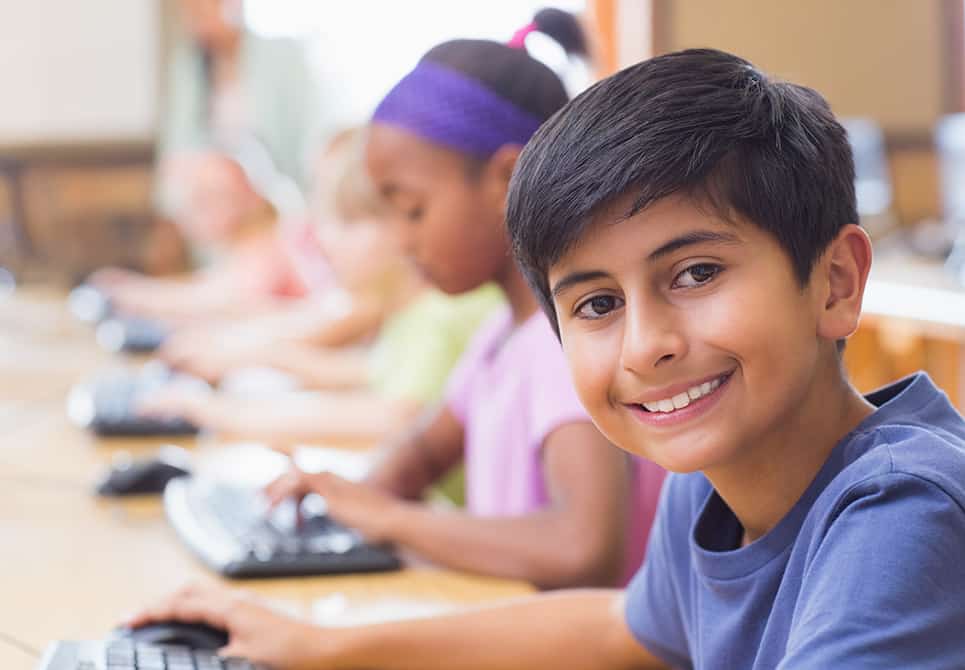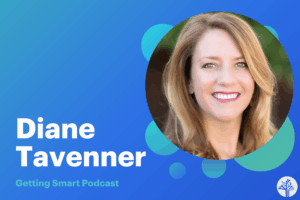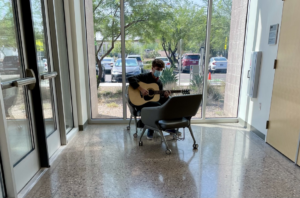What is Personalized Learning?

Words matter. Their importance is often most visible when multiple phrases or keywords are used to describe similar or entirely different models or movements. Thankfully this nomenclature problem that we have in education is being addressed by leaders like iNACOL who in this blog that originally ran on Education Domain shares s Mean What You Say: Defining and Integrating Personalized, Blended and Competency Education, a paper that describes terms like personalized learning.
Advances in technology and personalized learning environments have created a historic opportunity to expand access and boost achievement and completion for learners across the globe.
With student-centered, personalized learning, we can identify students’ unique needs and address them. Teachers possess powerful tools to personalize instruction and utilize real-time data for feedback to intervene exactly where each student needs it most. It is about optimizing learning every day and maximizing the amount of learning per unit of time. Students also amass a collection of evidence that demonstrates their learning.
As an emerging and evolving field, it is essential to clearly define personalized learning to avoid confusion and frustration. Regularly-published, field-tested definitions prove useful for generating shared understanding and challenging misconceptions. By clearly articulating the definitions of these terms, the field can close communication gaps and advance toward next generation learning with increased clarity, effectiveness and scalability.
Personalized Learning, Defined
Each year, iNACOL surveys thousands of educators to inform and push our understanding of the field. This practitioner-based feedback informed our definition of personalized learning:
“Tailoring learning for each student’s strengths, needs and interests–including enabling student voice and choice in what, how, when and where they learn–to provide flexibility and supports to ensure mastery of the highest standards possible.”
The purpose of personalized learning is to open student pathways and encourage student voice and choice in their education. Differentiation is a key part of personalized learning, and it is essential in education. In personalized learning environments, educators seek to meet each student within their own zone of proximal development. Without personalization, there is a gap between the individual student, their learning, and the support they need to succeed in a way that makes sense to his/her interests.
The shift toward personalization changes the dynamic between the teacher and student. Educators take on new roles as mentors, coaches and facilitators, and power and control shifts to the students. By giving students ownership over their learning and grounding learning in their interests and passions, they feel valued, motivated and in control.
In an iNACOL survey, we asked educators what personalized learning means to them. Below are some responses:
- An understanding that tapping into unique interests, individual styles and specific needs can make work and learning meaningful and authentic;
- Asking each student, “What is best for you?”
- About relationships, knowing each individual student based on their academic and personal interests;
- Students accessing a curriculum that meets their individual needs, reflects their zone of proximal development, and gives them the opportunity to access resources to progress at their personal rate of learning;
- Engaging students with personal learning plans, where contributions from students, parents, support staff and teachers provide a path for ubiquitous learning to address students’ individual needs, interests and learning styles;
- Every student learning at his/her own pace using the tools that help them learn and augment their strengths; and
- Meeting the learner where they are, determining where they need to be and finding and scaffolding the right zone of proximal development to get them there.
Anytime, Anywhere, Flexible Learning in Partnership with Communities
 “School” is no longer defined merely as a physical space, classrooms lined with rows of desks and a teacher who lectures at the front of the room–nor does a student’s required curriculum have to involve a one-size-fits-all model that uses a single textbook. Anytime, anywhere learning that bridges formal and informal learning experiences is connected through the effective use of advanced technologies. Digital learning modalities combined with competency-based progressions prove fundamental to modernizing education systems that meet each student’s unique needs.
“School” is no longer defined merely as a physical space, classrooms lined with rows of desks and a teacher who lectures at the front of the room–nor does a student’s required curriculum have to involve a one-size-fits-all model that uses a single textbook. Anytime, anywhere learning that bridges formal and informal learning experiences is connected through the effective use of advanced technologies. Digital learning modalities combined with competency-based progressions prove fundamental to modernizing education systems that meet each student’s unique needs.
Personalized learning includes the idea of connectivism, where students have flexible learning environments, embedded within their communities, using a variety of modes, resources and modalities to accelerate learning. As the graphic above shows, by organizing resources around each student, we can provide personalized learning experiences, embedded in the community, with the appropriate supports students need to achieve mastery of competencies along their learning progressions.
Elements of Personalized Learning
Practitioners identified the following essential components of personalization:
- Student agency
- Differentiated instruction
- Immediate instructional interventions and supports for each student is on-demand, when needed
- Flexible pacing
- Individual student profiles (personalized learning plans)
- Deeper learning and problem solving to develop meaning
- Frequent feedback from instructors and peers
- Standards-based, world-class knowledge and skills
- Anywhere, anytime learning
- Performance-based assessments (project-based learning, portfolios, etc.)
Below is a list of resources to learn more about personalized learning.
- Report: Mean What You Say: Defining and Integrating Personalized, Blended and Competency Education
- Report: Maximizing Competency Education and Blended Learning: Insights from Experts
- Web Resources: CompetencyWorks.org and CompetencyWorks wiki.
- Share this blog with your PLNs with this sample tweet: “What is #PersonalizedLearning?@nacol defines & differentiates key terms in #k12 #nextgen learninghttp://www.inacol.org/news/what-is-personalized-learning/ #plearnchat”
Have you created personalized learning environments in your school or district? Become a guest blogger and tell us your story.
To engage in the latest conversations around personalized learning, follow personalized learning experts Barbara Bray (@bbray27), Kathleen McClaskey (@khmmc) and @plearnchat, and join in the personalized learning twitter chat: #plearnchat. Here, you can learn about the latest research, follow thought leaders, hear from teachers and learners, find strategies to support the changing roles of educators and students and build your professional network.
What does personalized learning mean to you? Share your thoughts with us on Twitter (@nacol) and in the comments below.
For more check out:
- Defining and Differentiating Personalized Learning, Blended Learning and Competency Education
- Undoing EduSpeak and Why Words Matter
Natalie Abel is a Program Manager at iNACOL. Follow Natalie on Twitter, @nat_abel
Stay in-the-know with all things EdTech and innovations in learning by signing up to receive the weekly Smart Update. This post includes mentions of a Getting Smart partner. For a full list of partners, affiliate organizations and all other disclosures please see our Partner page.






0 Comments
Leave a Comment
Your email address will not be published. All fields are required.